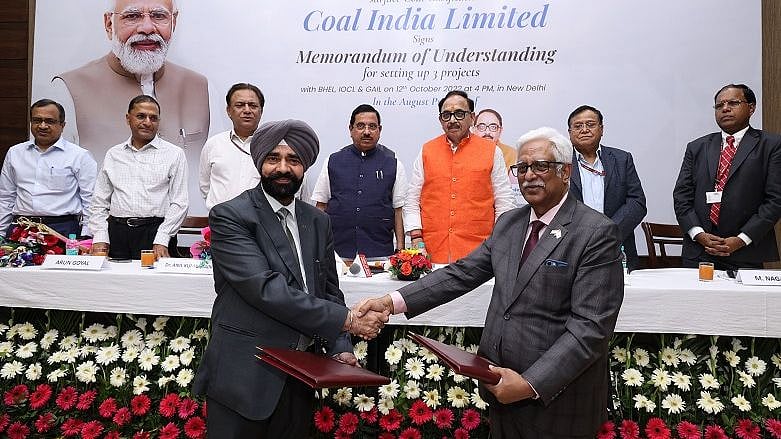The world must move quickly to reduce carbon dioxide emissions from coal significantly in order to avoid severe impacts from climate change, a new IEA report said on Tuesday, calling for immediate policy action to rapidly mobilise massive financing for clean energy alternatives to coal and to ensure secure, affordable and fair transitions, especially in emerging and developing economies.
The International Energy Agency (IEA) special report -- Coal in Net Zero Transitions: Strategies for Rapid, Secure and People-Centred Change -- provides the most comprehensive analysis to date of what it would take to bring down global coal emissions rapidly enough to meet international climate goals while supporting energy security and economic growth, and addressing the social and employment consequences of the changes involved.
This includes the major implications for the coal sector of a transition to net zero emissions by 2050, which would give the world an even chance of limiting global warming to the critical threshold of 1.5 degrees Celsius.
The new analysis in the special report, which is part of the World Energy Outlook series, shows that the overwhelming majority of current global coal consumption occurs in countries that have pledged to achieve net zero emissions.
Global coal demand
However, far from declining, global coal demand has been stable at near record highs for the past decade. If nothing is done, emissions from existing coal assets would, by themselves, tip the world across the 1.5 degrees Celsius limit.
"Over 95 per cent of the world's coal consumption is taking place in countries that have committed to reducing their emissions to net zero," said IEA Executive Director Fatih Birol.
"But while there is encouraging momentum towards expanding clean energy in many governments' policy responses to the current energy crisis, a major unresolved problem is how to deal with the massive amount of existing coal assets worldwide."
"Coal is both the single biggest source of CO2 emissions from energy and the single biggest source of electricity generation worldwide, which highlights the harm it is doing to our climate and the huge challenge of replacing it rapidly while ensuring energy security," Birol said.
"Our new report sets out the feasible options open to governments to overcome this critical challenge affordably and fairly."
Every future pathway for the global energy sector that avoids severe impacts from climate change involves early and significant reductions in coal-related emissions.
Countries with high coal dependency
The report makes it clear that there is no one single approach to putting coal emissions into decline. The new IEA Coal Transition Exposure Index highlights the countries where coal dependencies are high and transitions likely to be most challenging: Indonesia, Mongolia, China, Vietnam, India and South Africa stand out.
A range of approaches, tailored to national circumstances, is essential.
Coal-fired power plant
Today, there are around 9 000 coal-fired power plants around the world, representing 2,185 gigawatts of capacity. Their age profile varies widely by region, from an average of over 40 years in the US to less than 15 years in developing economies in Asia.
Industrial facilities using coal are similarly long lived, with investment decisions set to be made this decade that, to a large degree, will shape the outlook for coal use in heavy industry for decades to come.
Coal transitions are complicated by the relatively young age of coal power plants across much of the Asia Pacific region. If operated for typical lifetimes and utilisation rates, the existing worldwide coal-fired fleet, excluding under construction plants, would emit more than the historical emissions to date of all coal plants that have ever operated.












